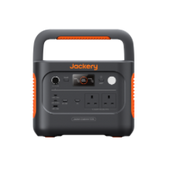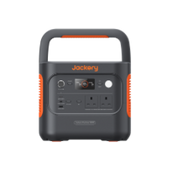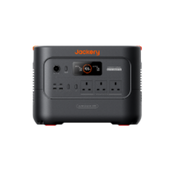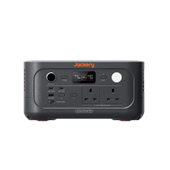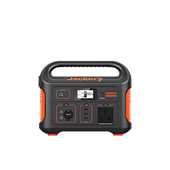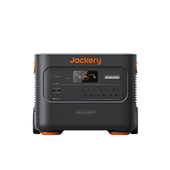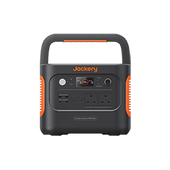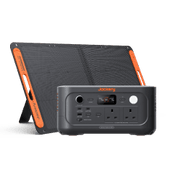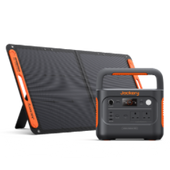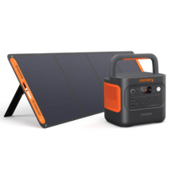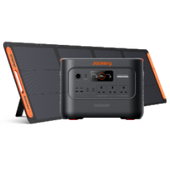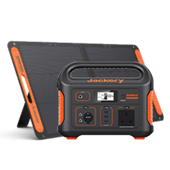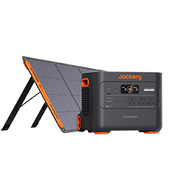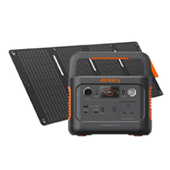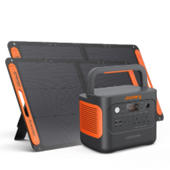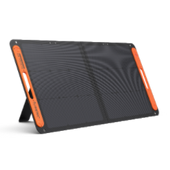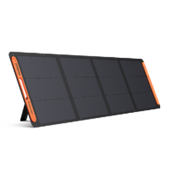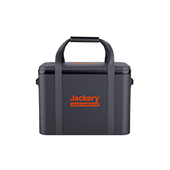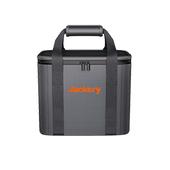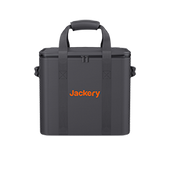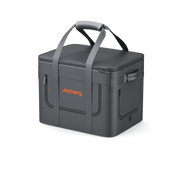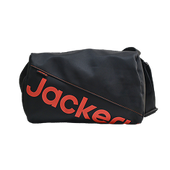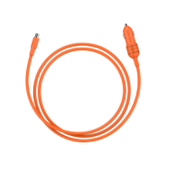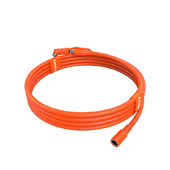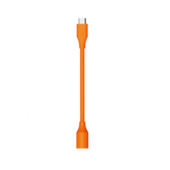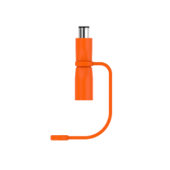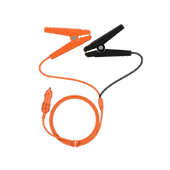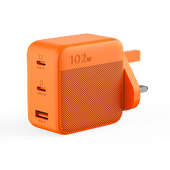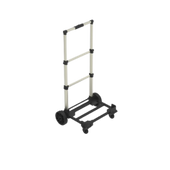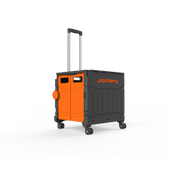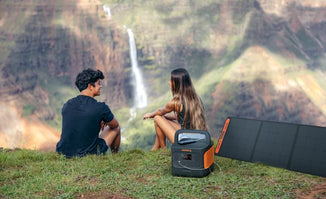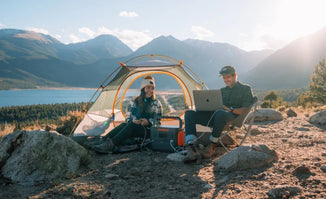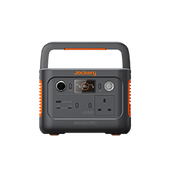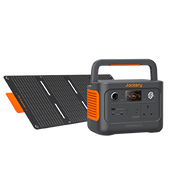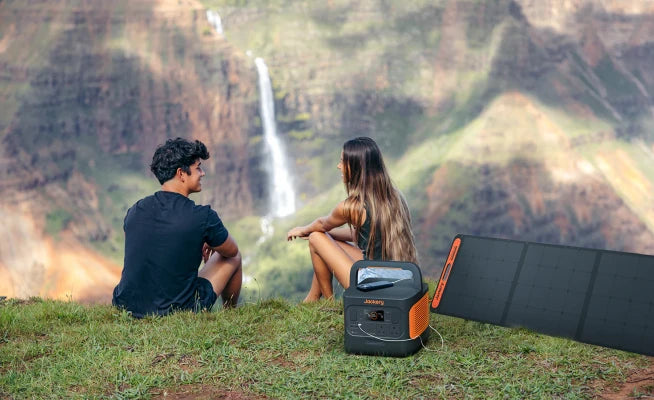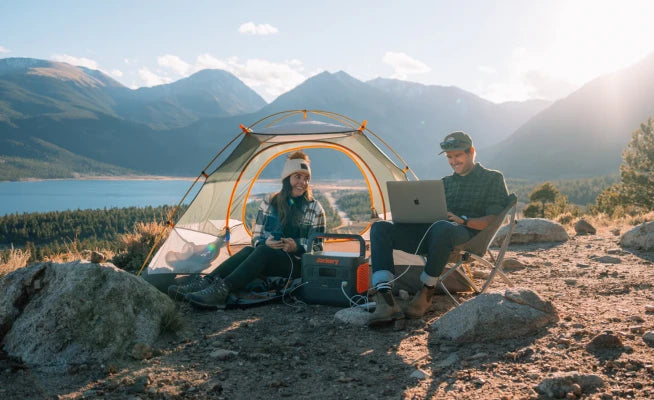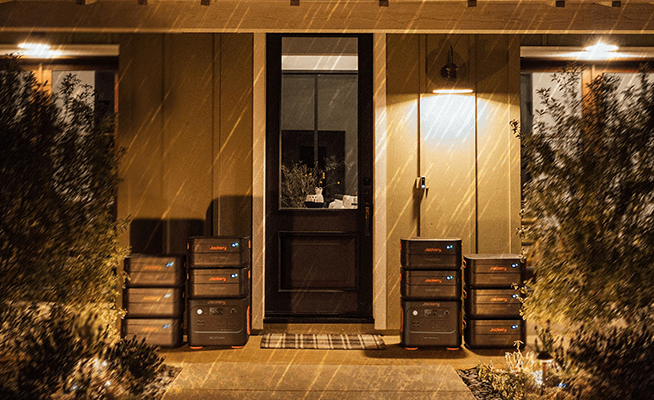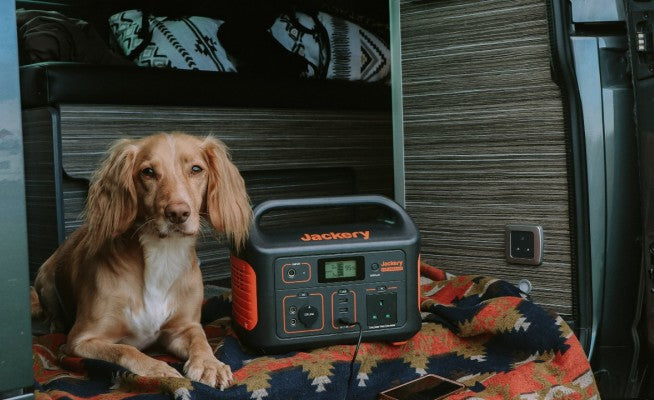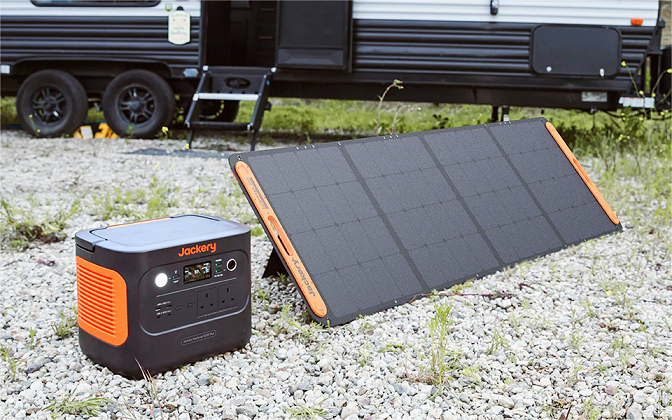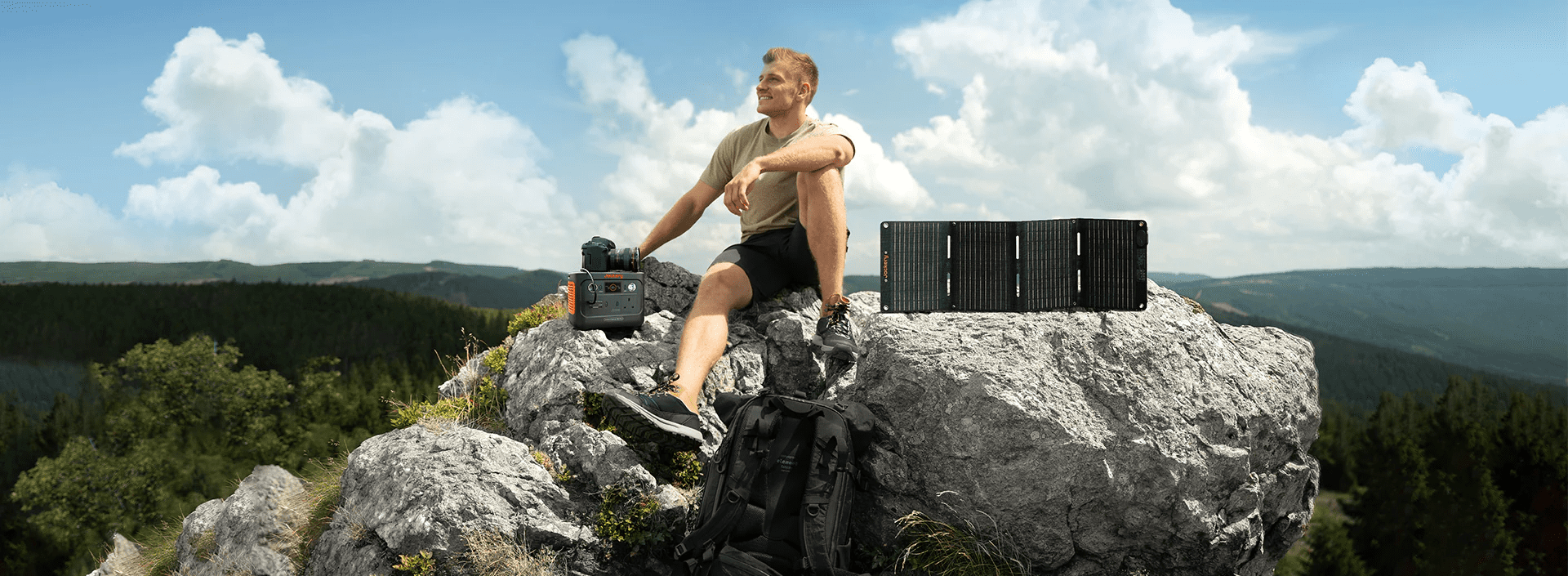You may have experienced kayaking and fishing, but what about fish kayaking (or kayak fishing)? Kayak fishing is a sport that combines the adventure of being on the water with the fun of fishing. It also means reaching fishing spots inaccessible to large boats and exploring secluded waters.
This blog covers almost everything about kayak fishing, including choosing the most suitable fishing spots and kayaks, various equipment to bring, and techniques to master. We highly recommend the Jackery Portable Power Station to power your essentials and devices outdoors for some nighttime or overnight fishing trips.
|
Key Takeaways: |
|
● In the UK, you can go kayak fishing, which is usually legal and relatively safe. ● You can find a suitable kayak fishing spot by consulting fishing clubs, joining online groups or forums, using Google Maps and satellite views, and consulting local fishing shops. ● For beginners, it is recommended to choose a sit-on, inflatable, and paddle-powered fishing kayak. ● Fishing rods, rod holders, personal flotation devices (PFDs), navigation tools, etc., are all essential equipment for fishing kayaks. ● Kayak fishing can be challenging, so please be patient. ● You should take a Jackery Explorer 100 Plus portable power station to keep you powered when kayak fishing outdoors. |
Can You Go Fishing in a Kayak?
As the name suggests, kayak fishing is a new experience that combines two popular hobbies, kayaking and fishing. No kidding, it's essentially fishing from a kayak. Most people want to experience floating on the water and easily travel to new fishing spots anytime. However, before you go, please know some basic information.
Is Kayak Fishing Legal?
In the UK, kayak fishing is generally legal, but specific rules and regulations apply depending on the location and type of water. For example, you must use legal fishing rods, lines and hooks. You cannot do it on private property or in waters where fishing is prohibited. Make sure to check and follow local regulations regarding fishing or kayaking.
Does Kayak Fishing Require a License?
In UK waters, kayak fishing does not require a license, but it does in rivers, lakes, canals, etc. Kayaking and fishing licenses are also needed when kayaking in freshwater.
Fishing License: If you are fishing for salmon, trout, freshwater fish, smelt or eels using rod and line in England (except the River Tweed), Wales, the Border Esk region (including parts of the river in Scotland) and private land (such as fishing club waters), you must hold a fishing license for England and Wales. The rules for fishing licenses in Scotland and Northern Ireland are different.
Kayaking License: To legally access most waterways in England and Wales, you need a waterway license through the British Canoeing Association or the Canal and River Trust. You can kayak freely on all Scottish waterways without a permit. Canoe NI can help you find information about kayaking licenses in Northern Ireland.
Is Kayak Fishing Safe?
Is kayak fishing safe? Newbies always wonder if it is secure. Don't worry; kayak fishing is safe if you are well prepared and operate correctly. For example, make sure your kayak is fully inflated before setting off. Always wear a standard PFD and choose a stable, fishing-friendly kayak. Learning safety knowledge about rowing, self-rescue, and navigation through professional courses before departure is best.

How to Choose the Right Fishing Kayak?
There are various types of kayaks on the market, each with different features and functions. Choosing the right kayak can enhance the fishing experience and ensure safety and convenience. When selecting a kayak, consider the following points.
Sit-on vs Sit-in
The UK waters are diverse, from lakes to coastal areas, and the seat design of the fishing kayak directly affects the fishing experience.
Sit-on Fishing Kayak: Its seat is open, and the legs can be stretched naturally, which is convenient for quick boarding, disembarking and adjusting posture. It is suitable for shallow water areas or scenes that require frequent movement, such as streams and creeks.
Sit-in Fishing Kayak: Its closed cabin design provides better stability and windproof warmth. It is also equipped with a storage compartment and a rod holder, suitable for long-term fishing or bad weather.
|
Type of Fishing Kayak |
Advantage |
Disadvantage |
|
Sit-on Fishing Kayak |
High stability Easy to get in and out Large space Safer |
Easy to get wet Slightly higher centre of gravity Slightly greater wind resistance |
|
Sit-in Fishing Kayak |
Dry and warm Low centre of gravity Low wind resistance |
Inconvenient to enter and exit Risk of sinking Limited space |
Rigid vs Inflatable Kayak
The material selection of fishing kayaks must consider transportation, storage, and safety requirements.
Rigid Fishing Kayak: These are usually made of composite materials such as carbon fibre and have a sturdy structure and strong durability. They are suitable for carrying heavier fishing gear but require a larger storage space, roof rack, or special transportation trailer.
Inflatable Fishing Kayak: It is light and easy to fold, suitable for small car transportation or hiking to remote waters. However, checking the air tightness regularly is necessary to avoid scratches and leaks.
|
Type of Fishing Kayak |
Advantage |
Disadvantage |
|
Rigid Fishing Kayak |
Optimal stability Strong wear resistance High potential for retrofitting |
Requires large storage space Heavy weight High initial cost |
|
Inflatable Fishing Kayak |
Easy to store and transport Lightweight Cheap |
Low speed and rowing efficiency Poor durability Easily affected by wind Requires inflation and deflation |
Paddle Vs Pedal
The fishing kayak's driving method will determine the boat's speed and physical exertion.
Paddle Fishing Kayak: The traditional paddle kayak is flexible and easy to operate. You only need to paddle with both hands alternately, and you can stop the boat at any time to adjust the fishing position. It is more suitable for leisure fishing, beginners, or people with medium physical strength.
Pedal Fishing Kayak: A pedal kayak is driven by a pedal system. It is faster and suitable for long-distance cruising or chasing fish. However, its operation is complicated and requires a learning period, and some British waters may restrict mechanical power devices.
|
Type of Fishing Kayak |
Advantage |
Disadvantage |
|
Paddle Fishing Kayak |
Reliable Low cost Lightest weight Versatile Quiet |
Occupies both hands Excessive physical effort Vulnerable to wind and water flow |
|
Pedal Fishing Kayak |
Free your hands Potentially more efficient More ergonomic |
High cost Heavy weight Complex structure Limited maneuverability Slight noise |
Sit-on fishing kayaks are popular for their excellent stability and ease of use. Inflatable fishing kayaks are cheaper, more compact, and easier to transport. When encountering narrow rivers, shallow waters, or waters with many aquatic plants, a traditional paddle fishing kayak may be a more straightforward and more reliable choice. In general, if you are a novice in kayak fishing, it is recommended to choose a sit-on, inflatable, and paddle-powered fishing kayak.
How to Choose a Suitable Kayak Fishing Location?
Even if you have enough experience, you must find a suitable kayak fishing spot; otherwise, you won't get much. Here are three ways to find the best kayak fishing spots.

Method 1: Consult a Fishing Club
For beginners, the easiest first step to finding a kayak fishing spot is to consult your local fishing club. Most fishing rights in the UK's freshwater waters are granted to fishing clubs, many of which allow kayak fishing. You can use the Angling Trust to find fishing clubs near you.
Method 2: Join an Online Group or Forum
Join a local UK fishing forum (such as Anglers' Net) or social media group (such as Kayak Fishing UK on Facebook). Post a message asking if there are any kayak fishing spot recommendations. You can also visually judge the accessibility of the water, fish size, and common catches through kayak fishing photos or videos shared by relevant users.
Method 3: Use Google Maps with Satellite View
Open Google Maps, switch to "Satellite View" mode, and look for lakes, reservoirs, rivers or coastal areas. Prioritise areas with wide and clear water, which are usually rich in fish resources and suitable for kayaking. However, you must also be careful to find an appropriate entry point for the kayak, such as a gentle beach, gravel slope or dock. Don't forget to check if any bridges or other obstacles may restrict the kayak's access.
Method 4: Consult a Local Fishing Tackle Shop
Visit a fishing tackle shop near the water. The owner usually knows the local fishing hotspots. You can also ask if a one-stop service for renting kayaks and fishing equipment exists. It is best to bring a map and ask the owner or clerk to help mark the recommended area.
|
Best Kayak Fishing Locations |
Fish Types |
|
Derwent Water (Lake District) |
Pike, Trout, Perch and Roach |
|
River Ouse (North Yorkshire) |
Trout, Barbel, Perch, Pike, Chub, Roach, Zander and Eels |
|
Loch Ken (Galloway) |
Pike, Trout, Bream, Roach and Perch |
|
Rutland Reservoir |
Pike, Trout, Trophy Fish |
Essential Kayak Fishing Gear Checklist
After choosing a suitable fishing kayak, the next step is to prepare some key equipment. The following is a detailed list of essential kayak fishing equipment.

Fishing Equipment
The following are some basic fishing equipment for kayak fishing:
Fishing Rod and Fishing Reel: Choose a shorter fishing rod (6-7 feet) with a high-quality fishing reel, fish hook, lead sinker, float and other accessories.
Bait and Bait Box: Prepare live bait (such as earthworms or small fish) or artificial bait and store it in a sealed box.
Dip Net: Choosing a short-handled, foldable, large-mesh dip net is best.
Fish Storage Box: Choose a well-sealed fish storage box to store the catch to prevent blood and water from contaminating the boat.
Hook Remover: It can be used for deep throat hook removal to protect the safety of the hands.
Fish Ruler: Use it to measure whether the fish meets the legal size.
Kayak Equipment
The following is some equipment that can be set on the kayak:
Fishing Rod Holder: Install it on the kayak track or bracket hole to fix the fishing rod. In addition to fixed types, fishing rod holders also have adjustable angles.
Anchor System: It can help you locate the fishing spot and avoid being pushed away by the current or wind.
Fish Finder: Consider adding a fish finder to your kayak to help locate fish schools, underwater structures, water depth and water temperature.
Safety and Emergency Equipment
The following safety equipment is indispensable for kayak fishing:
Personal Flotation Device (PFD) or Life Jacket: A Personal Flotation Device (PFD) or life jacket should be comfortable and fit, and equipped with adjustable straps to ensure a secure fit.
Whistle: A whistle or horn is a tool for emergency distress signals.
Sun Protection Items: Sun hats, sun protection clothing, sunglasses, sunscreen, and other such items can reduce the damage caused by prolonged exposure to the sun.
First Aid Kit: A portable kit should contain hemostatic patches, disinfectant cotton, anti-allergic drugs, waterproof band-aids, etc.
Navigation Tools: Navigation and communication tools should include GPS devices or water maps to avoid getting lost.
Portable Power Station: Bring a portable power station (such as Jackery Explorer 100 Plus) that can recharge electronic devices anytime without worrying about running out of power.
Waterproof Bag: To avoid water damage, protect your mobile phone, GPS, and other essential items in a sealed bag.
Bilge Pump: When the kayak capsizes or floods, you can use a bilge pump to drain the water from the kayak.
Tow Rope: In an emergency, you can use a tow rope to tow the kayak to the shore or other places.
|
Essential Kayak Fishing Gear Checklist |
|
|
Fishing Rod and Fishing Reel Bait and Bait Box Dip Net Fish Storage Box Hook Remover Fish Ruler Fishing Rod Holder Anchor System Fish Finder Bilge Pump Tow Rope |
Personal Flotation Device (PFD) or Life Jacket Whistle Sun hats Sun protection clothing Sunglasses Sunscreen First Aid Kit Navigation Tools Waterproof Bag |
The above list is for reference only. Please adjust the equipment and items you must bring according to your needs. It is recommended that beginners start with basic equipment and gradually upgrade to ensure safety first.
Jackery Portable Power Station for Kayak Fishing
Taking a Jackery Portable Power Station for kayak fishing is an excellent idea for several reasons. It enhances your comfort, safety, and overall experience on the water. While a kayak has less space than a larger boat, Jackery offers various sizes, making some models surprisingly suitable.
A Jackery can reliably power your fish finder for extended periods, allowing you to locate fish, navigate structure, and understand the underwater landscape without worrying about your kayak battery dying. This is crucial for navigation, marking waypoints, and ensuring you can find your way back, especially in unfamiliar waters or changing conditions.
Kayak fishing often involves capturing incredible footage. A Jackery can keep multiple camera batteries charged throughout the day, so you don't miss that epic catch or scenic paddle. Unlike gas generators, Jackery Portable Power Stations are virtually silent. This is a massive advantage in a peaceful kayak fishing environment, as noise can spook fish and disturb the tranquillity of your outing.
Jackery Explorer 100 Plus
The Jackery Explorer 100 Plus is a compelling choice for kayak fishing, but it's essential to understand its specific niche. It's not for powering a trolling motor all day, but for providing compact, reliable power to your crucial small electronics.

Palm-Sized & Light Power: At just 2.13 lbs (965 g), it's incredibly light. This is paramount for kayak fishing, where every ounce matters for paddling efficiency, stability, and ease of transport. You won't even notice it's there. Its compact dimensions (4.96 x 3.41 x 3.43 inches) can fit into the smallest dry box, tackle bag, or even a PFD pocket (if properly protected). It won't get in your way or clutter your limited kayak deck space.
Airline Approved: The 99.2Wh capacity is typically within the limits for aeroplane carry-on luggage (most airlines allow up to 100Wh without special approval), making it ideal for travelling with your kayak or gear.
Long Lifespan: With 2,000 charge cycles to 80%+ capacity, the LiFePO4 battery ensures years of reliable use, even if you're hitting the water frequently. This is significantly more durable than typical power banks. LiFePO4 chemistry offers better thermal stability, which is reassuring in a potentially damp or humid kayak environment.
Robust Build: Made with UL 94V-0 rated flame-retardant material and designed for shock resistance (3 drops from 0.9m), it's built to withstand the bumps and jostles of kayak transport and use. The built-in BMS protects against overcharge, over-discharge, short circuits, and extreme temperatures.
|
Jackery Explorer 100 Plus Running Time |
|
|
GPS Device (30W) |
2.6H |
|
Phone (20W) |
6.2 Charges |
|
Portable Cooler (60W) |
1.3H |
|
Fish Finder (6W) |
13.2H |
|
Light (5W) |
15.8H |
(*The working hours are only for reference; the actual working hours depend on your usage.)
How to Properly Load a Fishing Kayak?
A properly loaded fishing kayak is easier to paddle and improves the fishing experience. On the other hand, an inadequately loaded fishing kayak might become unstable and difficult to control. Here are some pointers on how to correctly load a fishing kayak.

Check the Weight Capacity
Before loading, always check the kayak manual to confirm the maximum weight capacity. The total weight includes the person, equipment, and expected catch, and should not exceed this value; otherwise, there is a risk of capsizing. It is recommended to reserve a 20% safety margin to deal with unexpected situations.
Distribute the Weight Evenly
The even distribution of weight determines the stability of a fishing kayak. Heavier objects, such as fish boxes and portable power stations, should be placed in the kayak's centre to balance the weight. Avoid stacking heavy goods at the bow or stern, as this might make manoeuvring difficult or lead to capsizing.
Keep It Easy to Access
It is best to pack it in a way that is easy to access when on the water, to avoid the hull shaking due to frequent standing up to get things. For example, frequently used items such as bait boxes should be placed where they can be reached with one hand. Spare fishing gear or emergency supplies can be secured in the stern compartment or side nets.
Secure Equipment
Use straps, bungee cords, or special storage nets to secure larger equipment or items to the fishing kayak. Secure the equipment to prevent it from moving or falling off, especially when paddling.
After packing, be sure to check the loaded weight. If you are close to the upper limit, discard non-essential items decisively.
Kayak Fishing Tips and Tricks
Whether you are a beginner or want to improve your skills, refer to the following tips to become a better kayak fisherman.

Tip 1: Practice Kayak and Fishing Rod Control in Advance
If you have never paddled a kayak, spending time in safe and calm waters is best to practice paddling, moving forward and backwards, turning, emergency stopping, and keeping stable before fishing. Then, practice casting lures, controlling fishing rods, scooping fish, etc.
Tip 2: Travel Light
Keep your equipment simple when kayaking to make it easier to tie bait, handle fish, and handle everything. This will ensure that you have enough space to operate.
Tip 3: Choose the Right Fishing Method
Like ordinary fishing, kayak fishing has many different methods. When you know what fish to catch, adjust to the appropriate method to increase your catch.
|
Fishing Methods |
Fish |
Advantages |
|
Fly Fishing |
Bass, Mackerel, Mullet, Trout |
Closer to the fish Opportunity to drift |
|
Float Fishing |
Mackerel, Garfish, Pollock, Coalfish, Wrasse, Black Bream, Prawns, Sand Eels |
Good when the surface of the sea or river bed is rough Float disappears when you have a catch |
|
Ledgering |
Bream, Barbel, Tench, Catfish, Carp |
Weighted bait stays in place Suitable for windy days to keep the bait in position |
|
Trolling |
Salmon, Mackerel, Kingfish |
Cover more ground with one or two baited lines Hands-free fishing |
|
Spinning |
Bass, Trout, Walleye, Pike |
More action and excitement Suitable for beginners and young anglers |
Tip 4: Learn to Use One Hand
Learning to use one hand is a handy skill for kayak fishermen. Compared with two-handed casting, one-handed side casting allows you to easily throw bait or lures into narrow spaces or farther from the water surface. If your hook is snagged on water plants or anything else, you must paddle with one hand to free it.
Tip 5: Be Patient
Kayak fishing can be challenging, so the pace is typically slow. Be patient and adapt dynamically at any time. If there hasn't been a harvest in a long time, try changing bait or fishing areas.
Tip 6: Respect the Environment and Regulations
Abide by fishing limits, release juvenile fish, and protect fish resources. Avoid kayaking in no-fishing areas and nature reserves. Remove all garbage generated to preserve the water ecology.
FAQs
The following are the frequently asked questions about fish kayaking:
1. Why do people like fish kayaking?
People are usually attracted to fish kayaking for the following five reasons:
Access to remote fishing spots
Affordable
Suitable for calm waters
Compact and space-saving
Exciting
2. Is fish kayaking safe for beginners?
Yes. Fish kayaking is safe for beginners if necessary precautions are taken and safety equipment is used. However, it is recommended that beginners take a professional course before the actual operation, including how to properly get on and off the kayak and how to deal with different water conditions.
3. Do you need to wear a life jacket when kayaking?
Yes. When kayaking, it is recommended that you wear a suitable personal flotation device (PFD) or life jacket at all times.
4. What are the safety precautions to follow when fish kayaking?
When fish kayaking, please follow the safety precautions that need to be paid attention to:
Always wear a PFD.
Do not experience bad weather like strong winds, heavy rain, etc.
Inform others of your plans and estimated return time.
Always pay attention to your surroundings.
Practice self-rescue skills in case of capsizing.
Final Thoughts
In short, kayak fishing is a unique experience that allows you to experience another thrilling water adventure while catching fish. Kayak fishing is safe if you are well prepared and operate in a standardised manner. Fishing rods, fishing rod holders, personal flotation devices (PFDs), navigation tools, portable power stations, tow ropes, etc., are all necessary equipment. For novices who have never experienced it, practising operating kayaks and fishing rods in advance is the first prerequisite for personal safety.



